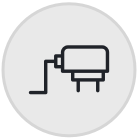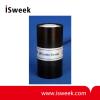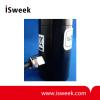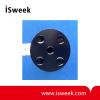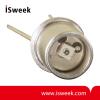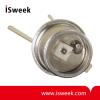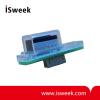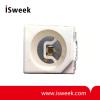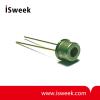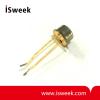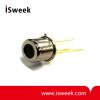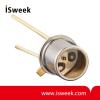UV Index Sensor - SKU 440
SKU 440 UV index sensor reflects the risk value of UV through UV index.
- Quantity:
- - +
Product Specification
Skye have been designing and manufacturing quality, fully calibrated light sensors since 1983. As well as this UV Index sensor, the range also includes UVA and UVB sensors (see seperate datasheets).
This UVI Index sensor has a response closely matching the Erythema Action Spectrum, the damaging portion of the solar radiation spectrum associated with sunburn and skin cancer.
The UV Index sensor gives a voltage output which can be easily scaled to UVI values with an appropriate meter e.g. Apollo Display Meter (SKA 400) i.e. ranging from 0, low risk of sunburn to 11+, dangerous levels of UV).
The sensor is calibrated against a reference traceable to National Standards under full sunlight conditions, and so is ideal for long term datalogging on meteorological stations.
SKU 440 SPECIFICATIONS
|
Construction |
Anodised black aluminium, sealed to IP67 |
|
Cable |
Screened. 7-1-4-C military specification. Cable gland on sensor housing |
|
Sensor |
Cosine corrected head. Specially formulated diffuser |
|
Detector |
Filtered SiC Photodetector |
|
Spectral Response |
Close to Erythemal Action Spectrum |
|
Output Scaling |
Nominal- 0-2V = 0 - 20UVI ( 0-0.5 W m-2) |
|
Thermal Drift of Output |
0.075mV/℃ max (-20 to +50℃) |
|
Absolute calibration error (1) |
typ. <3%, (5% max) |
|
Cosine error (2) |
3% |
|
Azimuth error (3) |
< 1% |
|
Longterm stability (4) |
±2% |
|
Response time (5) |
better than 50ms |
|
Mounting |
M6 x 7mm tapped hole in base. Sensor supplied with. M6 x 16mm screw + 4x 1.5mm washers to suit panel thickness of 3-10mm |
|
Weight |
200g with 3m cable |
|
Temperature range |
-20 to +70℃ |
|
Humidity range |
0-100% RH |
(1) Main source of this error is uncertainty of calibration of Reference. Skye calibration standards are directly traceable to N.P.L. standard references.
(2) Cosine error to 80º is typically 5% max. Figures shown are for normal use sources, e.g., sun plus sky, diffuse sun, growth chambers, etc.
(3) Measured at 45º elevation over 360º.
(4) Maximum change in one year. Calibration check recommended at least every two years. Experience has shown that changes are typically much less than figures quoted.
(5) Times are generally less than the figure quoted, which is in milliseconds. They may be slightly increased if long leads are fitted, or those of a higher capacity cable.
If you cannot find what you want, you can entrust OFweek to source for you. Just click:
Sourcing Service



